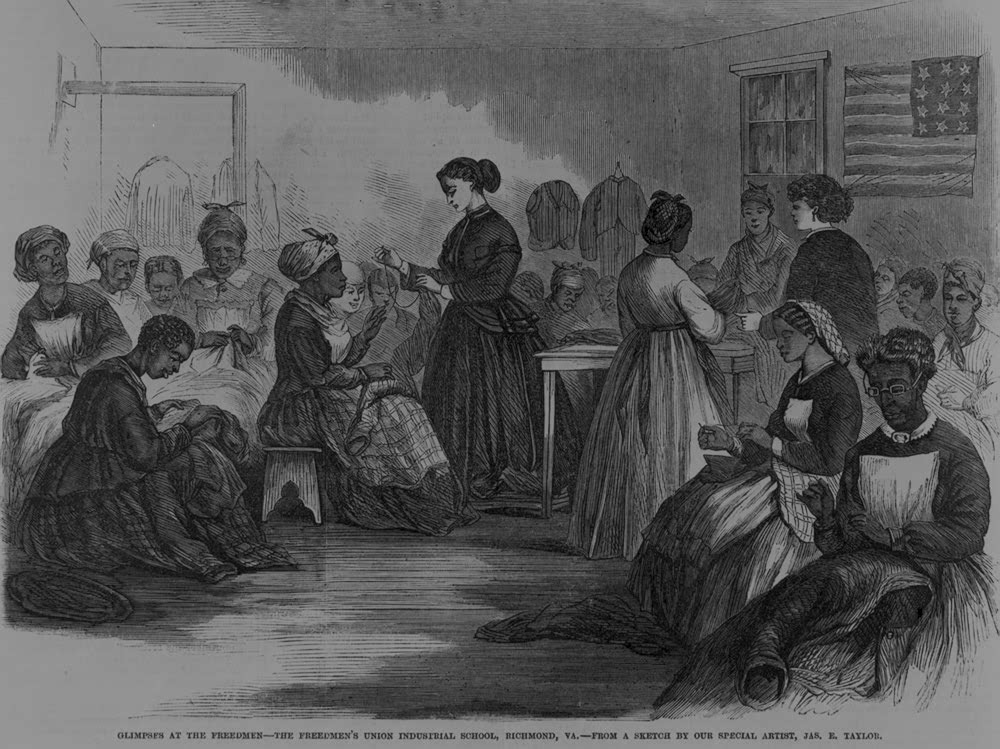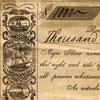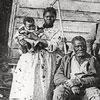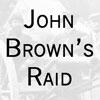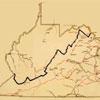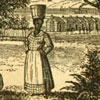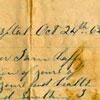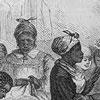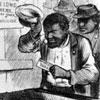On March 3, 1865, Congress established the Bureau of Refugees, Freedmen, and Abandoned Lands, commonly known as the Freedmen’s Bureau, to “supervise the control of all subjects relating to refugees and freedmen from rebel states.” Under the jurisdiction of the War Department, the Freedmen’s Bureau was in part designed to provide aid to four million newly freed African Americans in their transition from slavery to freedom. This included helping them find new homes and employment, improving educational opportunities, and providing health facilities.
Examine this 1866 illustration by James E. Taylor of the Freedman’s Union Industrial School, a vocational school in Richmond, Virginia. Who are the students? What are they learning? Who are the teachers?
The Bureau received numerous requests for aid in finding clothing, food, jobs, homes, and care for orphans and the aged. The Freedmen’s Bureau also helped to unite the families of former slaves and perform legally sanctioned marriages. The Bureau had notable success in the areas of education and health, creating over 4,000 schools from the elementary level thorough college. As was the case at the Union Industrial School, many white women from the North traveled into the South to provide education and training for the newly freed population – in this case, the fine points of sewing.
The Bureau, however, was unable to establish lasting civil rights for African Americans, and in many cases, it reinforced racial difference. For example, Bureau agents encouraged African American women to find work while discouraging white women from doing the same.
Source: James E. Taylor, “Glimpses at the Freedmen – the Freedmen’s Union Industrial School, Richmond, VA,” still image, 1866, Library of Congress, Prints and Photographs Division, accessed September 20, 2011.


